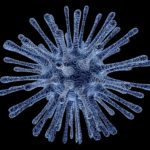Postherpetic Neuralgia Questions you Have….
Answers You Need!
QUESTION: What causes shingles?
ANSWER: Shingles is caused by the Herpes Zoster Virus.
QUESTION: How does the virus enter the body?
ANSWER: Usually in childhood, in the form of chicken pox.
QUESTION: What happens to the viruses once it enters the body?
ANSWER: They migrate to the nerves, and continue a dormant parasitic existence.
QUESTION: What makes these dormant viruses become active again?
ANSWER: Any stressful situation that compromises your immune system.
QUESTION: How does shingles manifest itself?
ANSWER: A blistered rash, accompanied by itching or burning pain.
QUESTION: What are the symptoms of shingles?
ANSWER: Even before the rash appears, you may sometimes experience burning or pain in the affected area. some people even describe it as a feeling of “creeping of the skin.” This is followed by a reddish rash that soon turns to blisters filled with fluid. When the blisters break, the crust over and form scabs which may last for 7 to 10 days before they drop off. The itching and pain continue all this time.
QUESTION: How long does shingles last?
ANSWER: Shingles usually lasts about 3 to 5 weeks on average. Shingles tend to last longer if they are on the trunk, and shorter if the the face is affected.
QUESTION: What is Post Herpetic Neuralgia (PHN)?
ANSWER: Shingles pain that lasts longer than 5 weeks after the sores have healed is called Post Herpetic Neuralgia.
QUESTION: What causes Post Herpetic Neuralgia (PHN)?
ANSWER: No one knows for sure. There are several theories. They are:
1. The nerves have been severely damages.
2. There is chronic inflammation in the nerves.
3. There is a smoldering infection that is constantly taxing your immune system.
QUESTION: How long could PHN last?
ANSWER: In about 5% of people, PHN resolves in 2 weeks. In 80% of people it resolves within one year, and for the remaining 15%, it can last as long as 20 year.
QUESTION: At what age is a person most susceptible to shingles?
ANSWER: It usually attacks older people. The older they are, the more severe the attack. It is estimated that 50% of those over 60, and 90% of those over 70 could develop shingles.
QUESTION: What group of people tend to suffer the most severe and prolonged effects
ANSWER: People whose immune system has been compromised by:
– chemotherapy
– radiation
– steroid drugs
– transplants
– diabetes
– HIV infections
QUESTION: Where does the shingles rash most commonly appear?
ANSWER: The middle of the trunk. The second most common is the upper part of the face.
QUESTION: What causes shingles pain?
ANSWER: Shingles pain is neurogenic. Neurogenic pain is produced by damage to the nerve, or inflammation within the nerve cell. This is in contrast to skin pain, in which injury or irritation causes the skin cells to produce chemicals, which in turn stimulate the ends of nearby pain sensory nerves.
QUESTION: How prevalent is shingles?
ANSWER: Shingles affects about 850,000 Americans every year.
In the next chapter you will find out some interesting facts about the Herpes Virus.
Did you know that:
Six out of every ten PHN sufferers who try PainBreak, a new topical analgesic,
are getting relief… Now it’s your turn!
But will PainBreak work for you? There is only one way to find out…
Complete the following “Quality of Life Questionnaire” and I will send you a 30 day supply of Painbreak absolutely “free” and postage paid.
From Boyce N Berkel, MD, PhD – Neuralgia Relief Center – For Your Health and Betterment


























